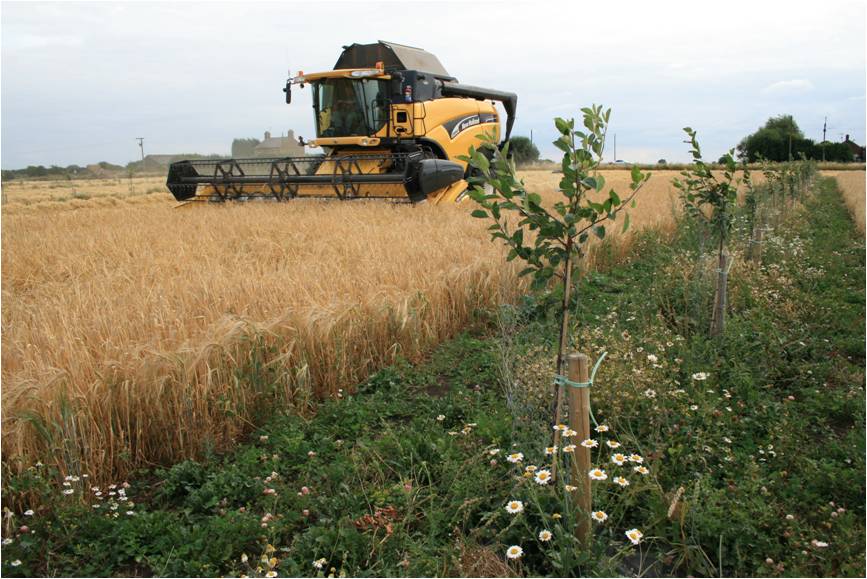Alexa Varah carried out her PhD in the Centre for Agri-Environment Research at Reading University, UK and with the Organic Research Centre, UK.

Abstract
Agricultural intensification has resulted in trade-offs between food production and environmental quality. Loss of environmental quality can negatively affect food production because biodiversity underpins ecosystem functions and services that contribute to productivity. This study investigated agroforestry, an agro-ecological production system in which trees are grown with crops and/or livestock, to determine whether it could reconcile these conflicts. Results indicate that it can: production efficiency, biodiversity, pollination, and in some instances carbon stock, were higher in agroforestry than monoculture.
Six organic sites in the UK – two arable and four pasture – were studied over three years. Agroforestry systems had higher plant and butterfly species richness and butterfly abundance than agricultural monocultures, indicating higher biodiversity. Agroforestry may therefore contribute to UK biodiversity targets in agricultural landscapes. Pollination service was higher in agroforestry treatments, with higher pollinator abundance, solitary bee species richness and seed set than in monoculture. Species richness of solitary bees and plants were strongly correlated, therefore managing agroforestry systems for greater plant diversity may positively affect pollination service. Production efficiency in agroforestry was higher than in monoculture systems. Therefore, at a landscape level agroforestry could be used to spare land or increase yields from land already allocated to production. Yield of individual system components varied from year to year, highlighting the need for further study of the interactions between weather patterns and productivity. Pasture quality was higher in agroforestry than monoculture. Compared to monoculture, pasture yield was higher in agroforestry in 2012 but lower in 2011. Cereal yield did not differ between treatments. Tree yield was affected by management and by appropriate selection of species.
Agroforestry systems stored more carbon aboveground than crop monocultures and modelled tree monocultures. Total carbon stocks were higher in mature, well-managed agroforestry systems; however, younger or poorly-managed systems had lower total stocks than agricultural monocultures. Findings were used to support recommendations for future research, practice and policy.











